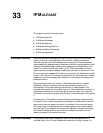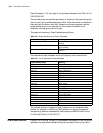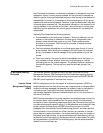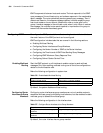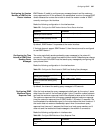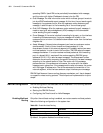
34
CONFIGURING IGMP
This chapter covers the following topics:
■ IGMP Overview
■ Configuring IGMP
■ Displaying and Debugging IGMP
■ IGMP Configuration Example
IGMP Overview The Internet Group Management Protocol (IGMP) is a protocol that is responsible
for the IP multicast member management among the TCP/IP protocol family. It is
the basis for IP multicast, and it is used to establish and maintain multicast
membership between the IP hosts and the multicast routers directly adjacent to
the hosts. IGMP does not include the propagation and maintenance of the
membership relationship information between multicast routers, which is
accomplished by each multicast routing protocol. IGMP operates on a physical
network, such as a single Ethernet segment.
At present, IGMP Version 1 and IGMP Version 2 are extensively used. IGMP Version
2 specifies the following three kinds of messages:
■ Membership Query Message: According to different group addresses, it can
be classified into a general query message or a group-specific query message,
used to learn if a particular group has any members attached on a network. For
a group-specific query message, the router is used to check whether there is
any subscriber in a connecting network who wants to make the query message
valid, and the target group address must be zero or a valid multicast group
address. IGMP Version 2 allows routers to send group-specific query messages.
■ Membership Report Message: When the host receives a general query or a
group-specific membership query message, it first identifies the combination
with the interface sending the query message and sets a host group delay timer
for each member group. If the remaining time of this timer is larger than the
maximum response time set in the query message, it is changed to the
maximum response time value. The host broadcasts the membership report to
this router before the time runs out. Once the router receives the membership
report, it adds the group to the membership list of the network it belongs to,
and starts the group membership interval timer. If the router does not receive
any membership report with the maximum query response timeout, it becomes
clear that there is no local group member, and it does not transmit the received
multicast message to the network it connects to.
■ Leave Group Message: IGMP Version 2 allows a host to send a leave group
message to all routers when it leaves a multicast group (the target group
address is 224.0.0.2).





